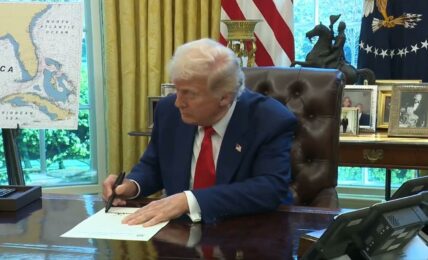By: Rick Lacaille, Executive Vice President and Senior Investment Advisor, State Street
With the United Nation’s COP26 climate summit in Scotland approaching, the investment industry has an opportunity to take stock of where we stand in addressing climate change.
Our industry has a key role to play in assessing the risks and opportunities arising from a changing climate and enabling the flow of investment to where it is needed. Together, we’ve got a lot of work to do.
As one of the he world’s leading custodian of financial assets and a major global investor, State Street is already seeing initial signs of progress on several fronts: decarbonization, disclosure, and engagement.
First, let’s look at decarbonization. State Street Associates, our firm’s research arm, has studied the carbon efficiency and footprint of institutional investment portfolios across trillions of dollars of custodial data for developed and emerging market equities between 2015 and today.
And what we found is this: A major shift towards decarbonization has been underway since the start of 2019.
According to our latest study just released, the aggregate carbon intensity of institutional portfolios has dropped by almost one third since the start of 2019 to October 2021.
So what’s behind the shift? Our researchers decompose changes in carbon exposure into distinct components mapping to company behavior, investor repositioning, and relative price effects. This decomposition reveals that more than half of the portfolio decarbonization we detect comes from asset repricing or market price impact, since low carbon assets increase in portfolio weights due to relatively better performance during the sample period.
But another significant factor behind the decarbonization trend, a little less than half of the carbon reduction, comes from changes effected by the companies investors own, as public companies themselves become more carbon efficient over time.
The progress towards decarbonization quantified by our study suggests that institutional investors as a group have started to reduce their exposure to transition risks significantly.
Next, let’s look at disclosure. Without consistent, comparable, and reliable corporate reporting of climate change impact, investors and markets are left to operate in the dark. State Street and others have already endorsed the Task Force on Climate Related Financial Disclosures (TCFD) and as an investment community we are now converging on global standards for climate risk disclosure.
For example, in June, the G7 finance ministers released a directive supporting mandatory climate-related financial disclosures based on existing recommendations from the TCFD. In July, the G20 Finance Ministers and Central Bank Governors committed to developing a baseline global reporting standard building on the TCFD framework while taking into account regional circumstances.
It’s worth noting that climate risk disclosures are now becoming the norm in economies representing over 80 percent of global GDP.
Finally, engagement. This year we saw the global investment community substantially increase its engagement with public companies on issues related to climate change.
In the first half of 2021, State Street alone held 161 engagements with public companies concerning environmental risks. We saw a 51 percent increase in the number of climate-related proposals at our investee companies in the 2021 proxy season compared to the previous year, with over a third of proposals gaining majority votes.
To be sure, this is just the beginning of all the work we need to do together. For instance, while decarbonization of portfolios is an important strategy, it is not sufficient and collectively we need to put just as much emphasis on what we will invest in as opposed to what we will divest from.
On the disclosure front, more work is needed to improve the data, analytics, and risk management tools around climate, especially in new areas like warming scenario analysis, climate value at risk, and stranded asset sensitivities. And we strongly advocate for more engagement with public companies, not only as a path forward to address climate change but to address other issues as well.
But that’s why COP26 is so important. This is a critical time to come together to take stock, chart a course for a sustainable future, and accelerate our efforts to get there. And in State Street’s capacity leading the Asset Owner and Asset Manager Task Force within the Sustainable Markets Initiative we intend to do just that. Together, let’s vigorously pursue and complete the work we’ve already started in addressing climate change as we prepare for even more significant steps.
About the author:
Rick Lacaille is executive vice president and senior investment advisor, responsible for leading the company-wide ESG program at State Street.
The post Taking Stock Ahead of COP26 appeared first on ESG Today.



